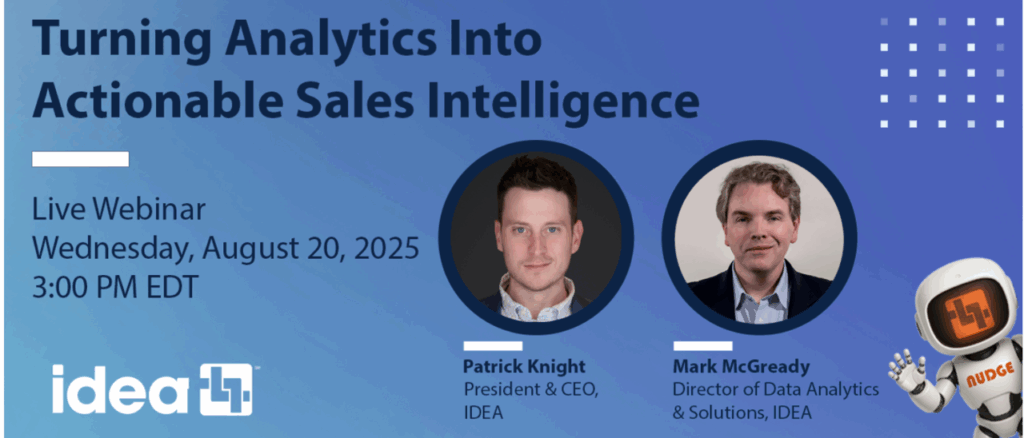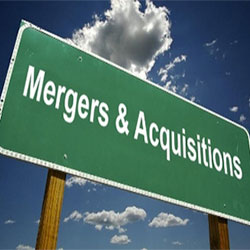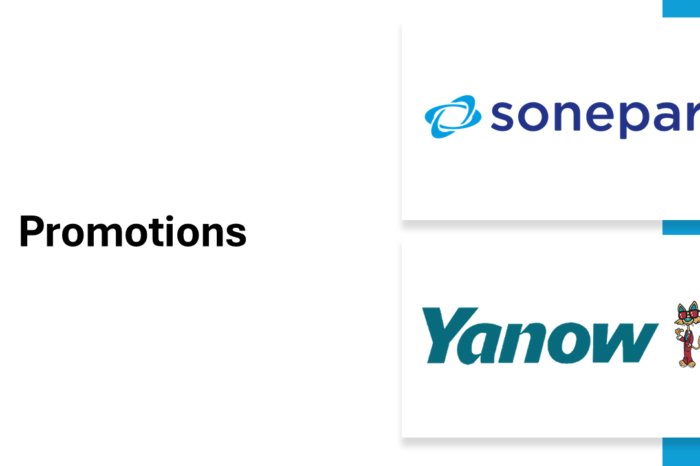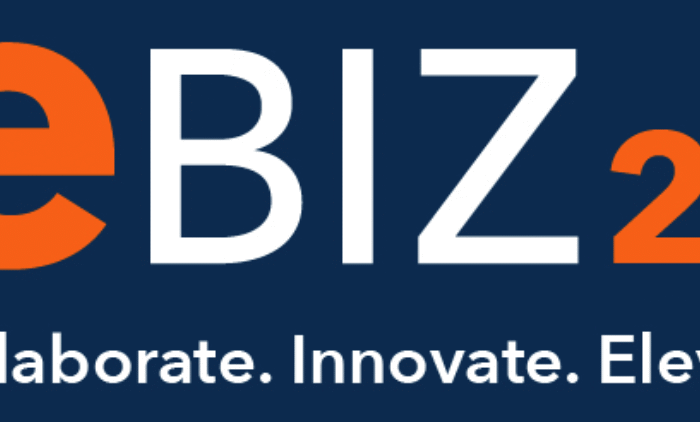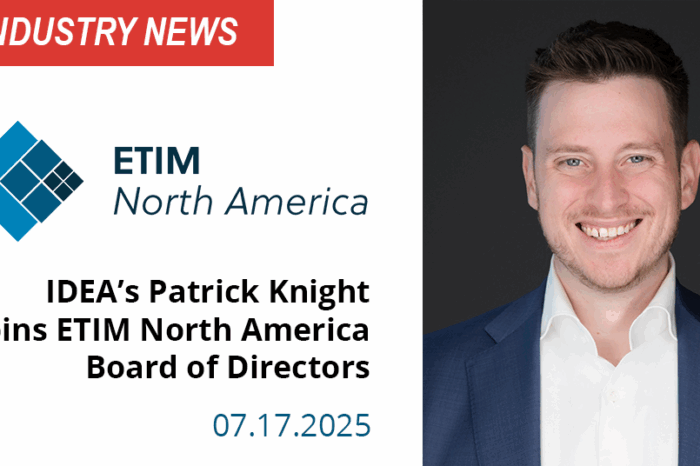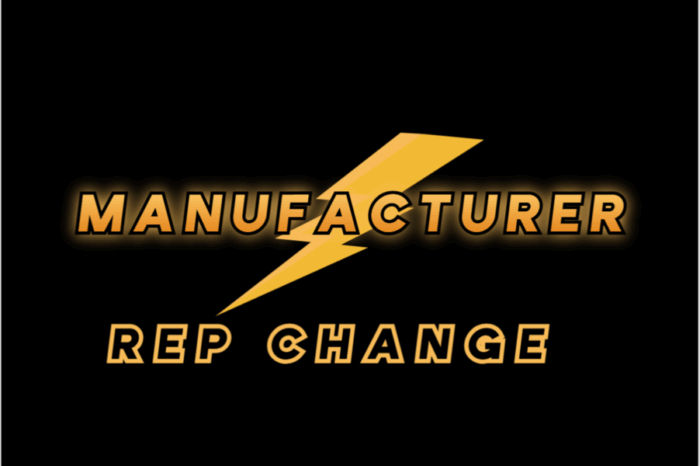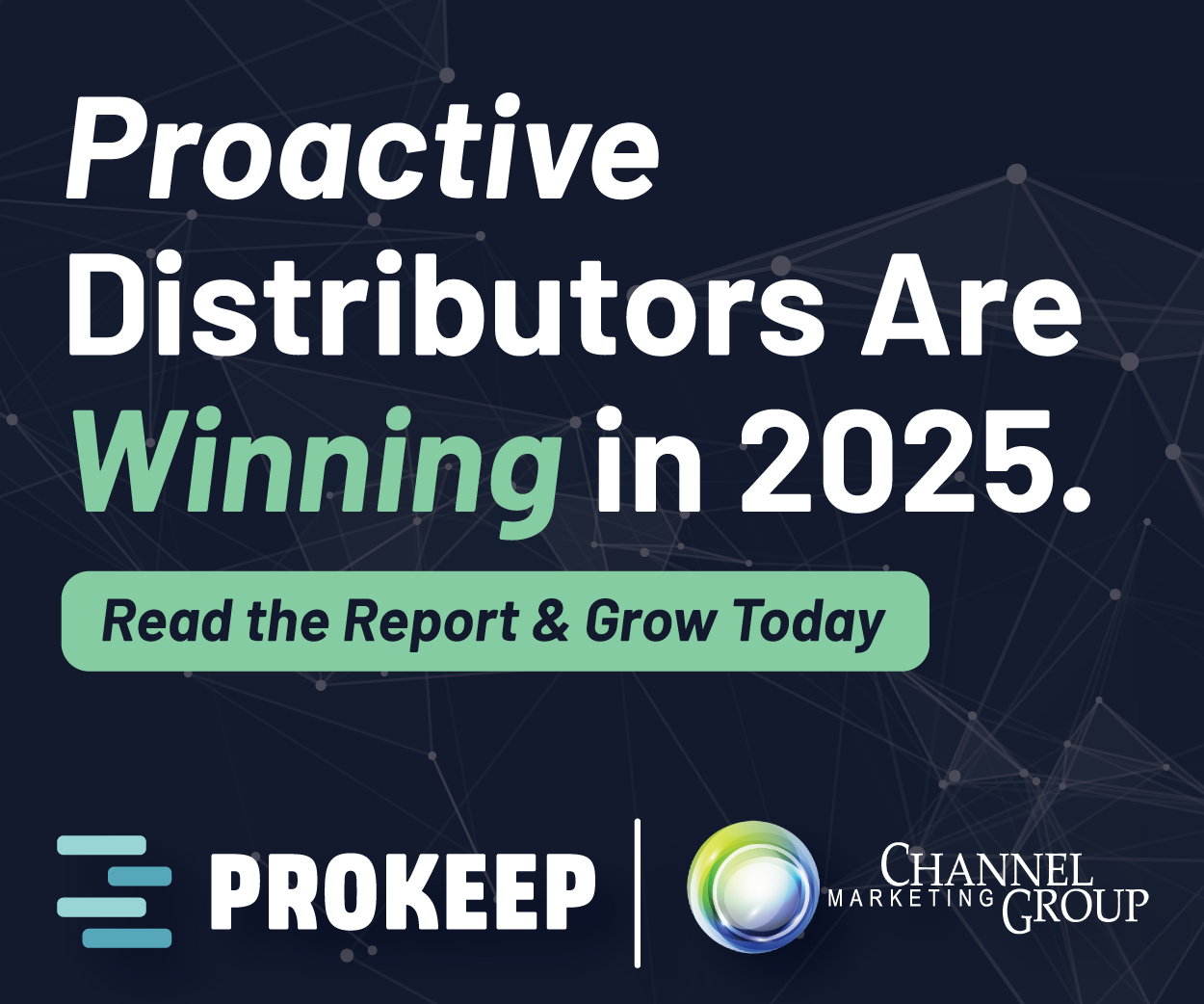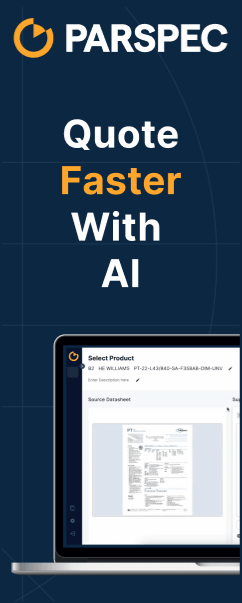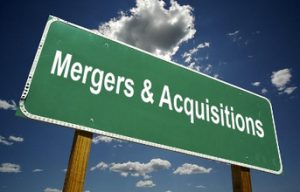Engineering better Sales with the Moneyball of business

While quarterly earnings for many companies are showing a strong Q2, if you are not servicing a data center, business is more challenging. This means that winning requires taking share. And to take share you need to outperform your competition. One way is to arm your sales team with better information so that every sales call counts.
To use Mark McGready‘s term, it means making sure you are “engineering” for success.
Mark is IDEA’s Director of Data Analytics and Solutions.
Every company has a sales manager. More importantly, every company has lots of sales / customer-related information. A sales manager does not have the bandwidth to coach each salesperson for each sales call or share insights to assist on each sales call … but they can “whisper”, albeit electronically, key messages to salespeople and unlock the data that the company has.
This is, as Mark explains, how you can engineer sales to increase your success.
Engineering better Sales with the Moneyball of business
When I started in the industry I was hired as a Sales Engineer in Glasgow, Scotland. The title of ‘Sales Engineer’ always confused me. Essentially, they were saying I was an engineer who could sell stuff, meaning I understood the product side and could also quote an order. ‘Engineer who could sell,’ in other words. However, I had a different first impression – that I was a seller who could engineer business. A fundamentally different concept. And perhaps 25 years later, it might have been the right idea all along.
The role of a sales representative involves many hats. The common ones are nursemaid, therapist, firefighter, and politician. A seasoned, successful, salesperson will tell you that the business will come if you wear these hats well. Why, because you’ve mastered the art of serving the manufacturer’s interests, your company’s interests, and, most importantly, serving your customer. Many hats, one ball (the customer’s needs at that moment) to balance … yes, you have to be a juggler also!
It’s natural for sales calls to be reactive – you meet with the customer at their request and hear what their needs are and how you can address them. The sales call plan is simple … listen to the customer and DO what they need you to do.
Too often I would go into meetings with this plan, which is, no plan, agenda, or goals beyond ‘keep the customer happy.’ As a result, ‘I’ll get things sorted out for you’ was the outcome for 90% of these meetings. A little list of things to investigate and follow up on, to keep the customer from questioning their choice of whom to do business with.
That was what was expected, that was essentially the job, particularly when the field office business plan each year was ‘sell more than we did last year.’ We were trained this way, given resources, and contacts to help navigate these questions, and essentially played a role in helping customers navigate our own organization. Customer success disguised as sales.
However, when I look back at the opportunity of a sales call, and the cost not just in terms of cost of my salary, but support, equipment, training, tools, services and so on, that call really needed to be a two way conversation – hear how we can be better for the customer, and also take the opportunity to help them become a better customer for my company.
‘Sell more stuff’ is a tried-and-true business strategy. The more sophisticated companies I’ve worked for got even more ambitious – ‘sell more stuff at higher prices.’
How do you achieve these goals?
It’s an interesting question that I’d like to ask my sales manager but, you know what the real answer is, “Dunno, that’s for you to figure out. Just meet your quota or we’ll have to have uncomfortable conversations.” It was the business equivalent of telling your team to ‘just play harder.’ And maybe we can actually take a page from the world of professional sports.
“Good Game, Play Harder Next Time” Doesn’t Work
 Coaching has moved beyond ‘good game, play harder next time.’ Top teams these days break the games down, watch film, look at individual players or components, tweak and adjust until they build a harder playing team, rather than asking for one and hoping it will happen. And they hire specialists to deliver customized information … for the player and against (or for) the specific opponent that day / night.
Coaching has moved beyond ‘good game, play harder next time.’ Top teams these days break the games down, watch film, look at individual players or components, tweak and adjust until they build a harder playing team, rather than asking for one and hoping it will happen. And they hire specialists to deliver customized information … for the player and against (or for) the specific opponent that day / night.
Most people know the story of Billy Beane, the Oakland A’s general manager who embraced the idea of Moneyball. They made a great movie out of it. They broke down the game into measurable metrics, understood the results they needed, and engineered a team to meet those goals. And while Billy didn’t get the job, this was how the Red Sox and Cubs somehow became world champions. It fundamentally changed how sports are coached. Anyone who didn’t look at the metrics found themselves left behind.
Many electrical distributors have progressed to provide sales teams with reports, spreadsheets, CRM systems, scorecards, charts and so on … ultimately resources for them to figure it out. The tools to embrace our own kind of Moneyball. Some willingly dive into these resources and spend time in the office researching and looking for the right improvement strategies. Most, however, are salespeople to their DNA, and they’re not set for a life being a data scientist. Billy Beane didn’t expect Scotty Hattenburg to study the numbers – he had Jonah Hill for that.
Moneyball for Electrical Distributors
Let’s pause here and ask the question ‘what does Moneyball look like for a customer?’ It’s essentially an understanding of their business opportunities, a measure of how good a customer they are today, and how they could become a better, maybe a great, customer. The steps to get there are very logical.
They become great by buying lots of your products, but there’s different definitions of ‘lots:’
- One is buying many different baskets of products – do they buy the wire and the gear and the lighting and the fixtures and the tools, or whatever range of products you offer them that fits their needs.
- Another is buying depth in those product categories, not just the main items but the auxiliary and accessory products that improve the items usefulness.
- Another is buying consistently from your business, not moving from one business to another based on their whims.
- Or simply seeing your company as the number one buying option instead of your competition down the street.
Each of these opportunities is a different strategic approach. Knowing which customer fits in which category is your first step in Moneyball.
However, even if you have a customer buying everything from you, you need to ensure that their cost to serve is manageable. That means you need to look at their buying dynamics to make sure they don’t have costly habits. Two customers can buy $100k worth of products a year, but if one places 10 orders a year and the other places 100, you have two very different costs to support.
And then if you have the perfect revenue mix, and are operationally efficient, are you truly profitable? The nature of pricing comes down to a fundamental dynamic – the customer will squeeze prices where feel that they can – they have the volume to ask for a better than average price. As a result, you have to capture more price where the customer isn’t squeezing, the lower volume-less purchased items where convenience is more valuable than price. We don’t want to build perfect customers only to not actually make any money on them.
And then, when you have a great customer who buys a wide range of products and orders efficiently and where price discounts are fair and targeted, how do you protect these crown jewels from being signed away? How do you stop the New York Yankees from taking your best players?
The Engineering of Sales … Business / Customer Intelligence
This is the Moneyball of business, the engineering of sales. It’s understanding where you stand with each account, what your top three goals should be, where that sales call can make an impact to make them a better customer after you leave. Just in the same way your goal is to be a better provider. This is the additional hat we need our sales teams to wear. Yes they’ll always need to be nurses, therapists, firefighters, and politicians, but can they don the hard hat of an engineer, the white coat of a doctor, and leave the customer better than they found them?
This to me is the point of business intelligence systems, of AI investments, of sales enablement. It’s what the promise of CRM was intended to be. A means to understand your customer assets, and how to use your sales team to get the best out of them.
Unfortunately, these tools haven’t made it easy to figure all this out, but now perhaps for the first time there’s a service that will do exactly this, and it’s here from IDEA.
On Wednesday August 20th talking about ‘Turning Analytics into Actionable Sales Intelligence’. In other words, it’s How-To-Moneyball your business.
Whether you’re a distributor trying to get results from your customer base, or a manufacturer trying to make distribution work better for you, this conversation is there to change Engineers who can sell into Engineering sales results. After 25 years in the industry, finally I might be starting my first job after all.
Register here: Live Webinar: Turning Analytics Into Actionable Sales Intelligence – IDEA
UPDATE – if you missed the webinar, register to get a link to the recording or contact IDEA. It was an informative session.
Take Aways
If you have not heard of IDEA’s new service, Data Whispers, check out their new service. It’s not a CRM tool, but can integrate into any CRM … or be as simple as a text message or email, making it an effective tool for distributors of any size that are committed to supporting their sales organization.
Salespeople nowadays are bombarded with information, and requests. Expecting them to do their own research for each customer to be proactive is becoming more and more challenging, hence they become reactive to the customer (which is positive). There are opportunities for them to be proactive to achieve company goals beyond “more sales.” It’s a case of “looking for diamonds in the rough.”
I encourage you, or perhaps more importantly, those in sales management, and maybe even some salespeople, to tune into this webinar (or at least register to get the recording) to listen to Mark share how to engineer better sales engagement.


